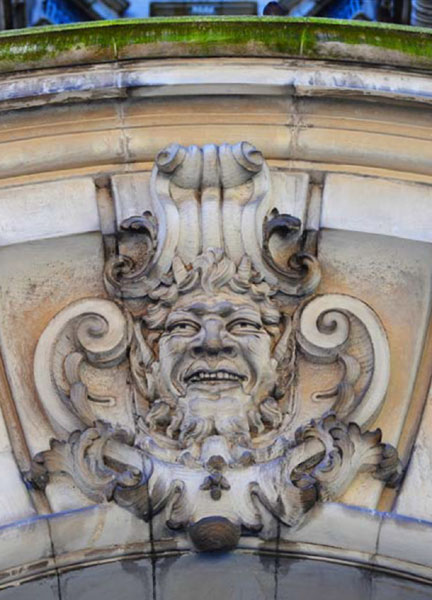
Benchwarming: A Sit-Down Tour of New York City
Don't just do something, sit there.
-- Zen Proverb
During my first year in New York, I couldn't walk half a block without stopping to gape at some wondrous foreign object. I stooped to study the designs of countless manhole covers. I cowered beneath sneering gargoyles that seemed to order me to move on.When crossing streets,I'd become fascinated by a forlorn apartment key embedded in asphalt like an ancient bug in amber. After 20 years I still walk the City's streets with fresh eyes, though occasionally I stop and take a rest. Bench Warming in New York is the result . Bench Warming in New York is a seating chart to a collection of real-life New York dioramas. These benches are not secreted away nor located in exclusive haunts. They are all in plain sight. It's the stories they tell that are hidden.
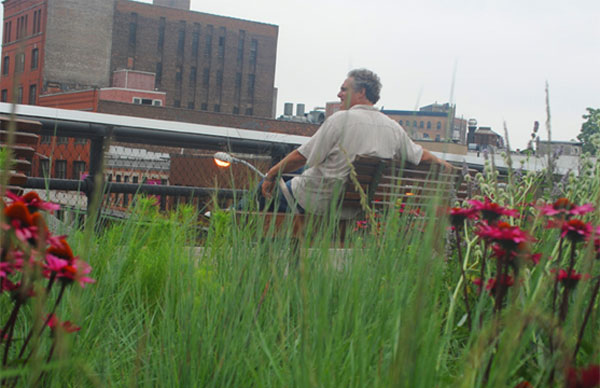
In the Flatiron
If you're planning a trip to New York City, allow me to recommend a bench. Your concierge will no doubt suggest another, but be forewarned -- benches touted by concierges are usually located near the food vendors with whom they have financial connections. The bench I'm plugging has nothing to do with such wily schemes.
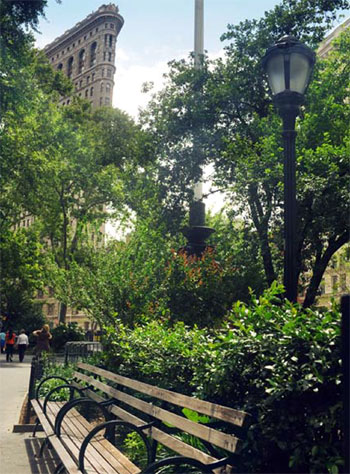
The handsome iron and wood bench of which I speak is in the Flatiron District, resting on the west side of Madison Square Park at 5th Ave. and 23rd St. It is pressed against the chain link fence of Jemmy's dog run -- the third bench north of the dog run's entrance. What makes this bench so exceptional is that it allows you to rest your feet while you investigate one of the city's more fascinating districts. In fact, you might learn more about the Flatiron District sitting on this bench than you would if you continued walking.
After you take a seat, look directly across the park to the enormous granite stump that forms the base of the Metropolitan Life Tower. The Metropolitan's directors yearned for a skyscraper, but financial setbacks halted construction far short of their dreams. This has left the building with a massive base that conveys the sense of a pumped up weightlifter straining to press a ten-pound barbell.
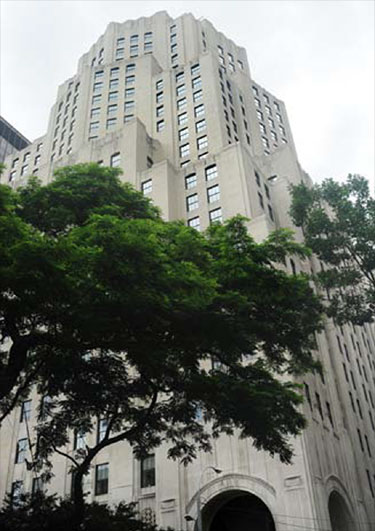
But I haven't sat you down to tell you tales of architectural underachievement. I'm here to tell you tales of that architectural marvel, Stanford White.
From the Met Life stump, sweep your view 45 degrees to the left and behold the 19th-century buildings that stand on the far side of Fifth Avenue between 24th and 25th Streets. Look for the building that isn't there.
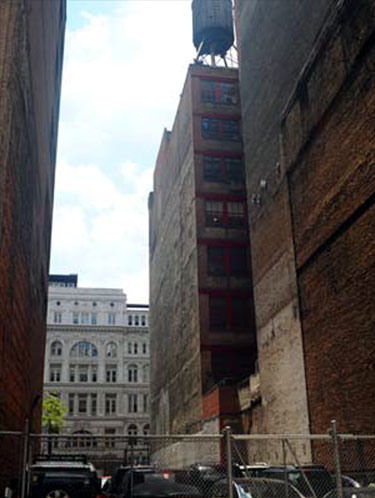
The gap in this row of brownstone teeth was once filled with one of White's most confidential Manhattan addresses -- the one where he kept his private X-rated playground. Here is where Evelyn Nesbit rode White's velvet swing into New York's erotic history. Evelyn, beautiful and 16, enticed White beyond all resistance -- for a while, at least. Their secret assignations ended when White began looking for less experienced playmates. Evelyn climbed off the swing and eventually married the off- kilter heir, Harry Thaw.
Now look beyond the park's northeast corner to the colossal granite birthday cake topped with one spear-like golden candle.

This is the New York Life building. Financed by the actuarial certainty of death, the Tower lies over the ruins of that shrine to temporal delights, Madison Square Garden. The elegant, gilded Garden was White's most famous public building -- and a venue for both the most outlandish and the most refined entertainments of his day.
From E.L. Doctorow's Ragtime, we know that Thaw, worked into a froth by Evelyn's accounts of her past escapades with 'Stanny,' shot White dead as he dined in the Garden's smart, roof-top restaurant. His Madison Square Garden succumbed 19 years later. The distinguished Madison Avenue Presbyterian Church, once adjacent to Met Life and White's last commission, is gone now, too. The building where he hung his swing collapsed under its own weight in 2008.
One small remnant of Stanford White's work re- mains in the park. It's a curved marble plinth that lies between your bench and the ghost of the old Garden.
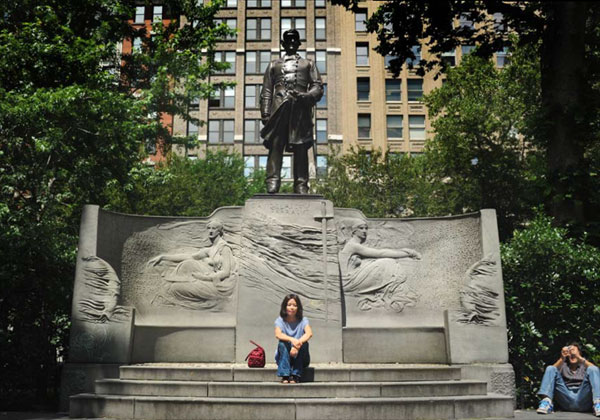
White designed the plinth for the bronze statue of civil war hero, Admiral Farragut. While the memorial was not raised to honor White, Farragut's "Damn the torpedoes, full speed ahead!" could pass for the audacious architect's own epitaph.
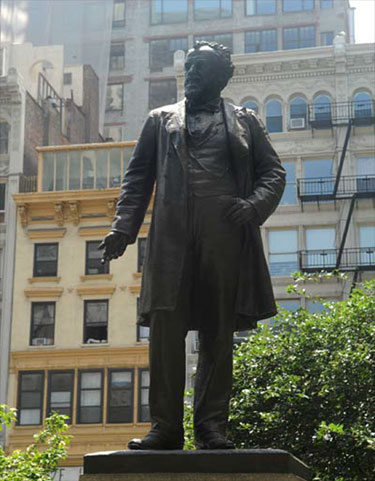
The well-fed bronze statue of Roscoe Conklin in the park's southeast corner mocks the feeble recognition given to White's contributions to the area. Conklin, a Republican politician, caught pneumonia during the blizzard of 1888 when he was trapped for several hours in Union Square Park, only 10 blocks south of his current location. Conklin's cronies contended that Union Square Park owed his effigy a place alongside its memorials to Lincoln and Washington. His enemies disagreed and, in a compromise, Roscoe was settled here, where the always-popular 'Shake Shack' is now located. His pose seems to express exasperation at no longer possessing the clout to go the head of the long line of people waiting to order. If you're hungry, I would recommend that you join them. Tell them I sent you.
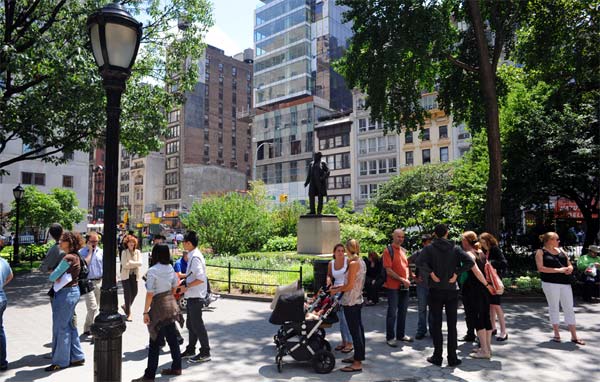
.
Photography by Tore Cleasson.

08/13/2013
05:05:12 AM